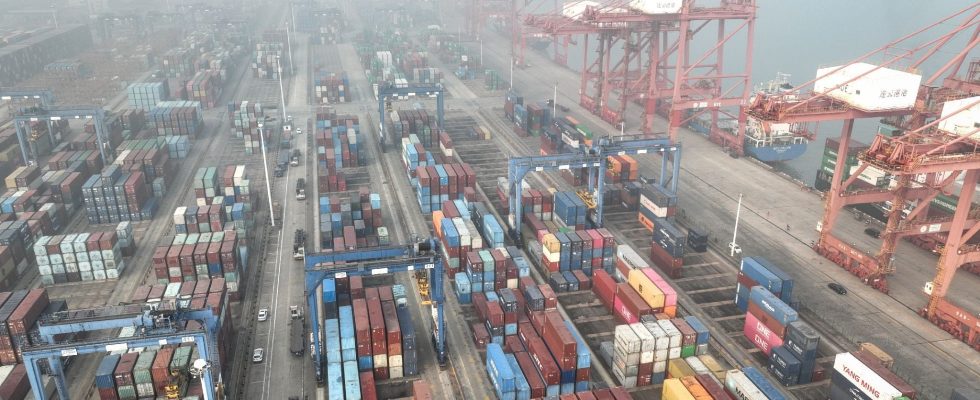The publication of China’s growth figures is always an event closely followed by analysts. Especially since in 2023, the second largest economic power in the world showed its slowest pace in thirty years, with the exception of the Covid years. This Tuesday, April 16, the country’s authorities reported an unexpected increase in GDP of 5.3% in the first quarter, more sustained than expected.
For the economist Mary-Françoise Renard, professor at Clermont-Auvergne University and author of the book China in the global economy, the Chinese government could use this “good news” to highlight the effect of certain measures put in place in recent months. In reality, many risks still weigh on the country’s economy.
Are the figures that have just been published really surprising?
It depends on the analysts. Experts had published forecasts which are not very far from what we observe. But the underlying trends of Chinese growth have not changed. This is why we are not necessarily very optimistic. The government has still not decided on a major recovery plan that would suggest that things will improve.
Could the government use these results to highlight the country’s ability to bounce back?
Very probably. There has indeed been an increase in industrial production, exports, as well as a recovery in services: restaurants, transport, tourism, etc. Furthermore, unemployment is stabilizing. In a way, that’s a good thing. The government has taken very specific recovery measures in certain specific sectors and ensures that they have produced their effects. As always when we analyze the situation, it is a very short-term view and not a structural one. However, last year, in 2023, at the same period, the results of the economy were not good.
However, this does not mean that the objective of 5% growth this year, set by the Chinese government, is more realistic than before…
No doubt we won’t be very far away, but it’s difficult to be more precise. Rightly so, we are always interested in China’s figures as soon as they have been published. However, in the very short term, we cannot learn a lot from it. But fundamentally, the problems remain.
What are these persistent risks to Chinese growth?
First of all, real estate, which has still not completed its transition. Prices have fallen significantly and the government hopes that this will revive the sector, but as the Chinese have placed their savings and invested in real estate, the situation is obviously very detrimental for the population.
Has the government taken the necessary measures to contain this crisis?
He took a number of them, but it takes time. We can clearly see that he is letting businesses go bankrupt in order to clean up the economy. Furthermore, the entire Chinese institutional organization, with local governments, is intertwined in this real estate sector and therefore the transition is necessarily very long.
No one can say yet how long this will take. This crisis weighs heavily on the economy. Its situation depends in particular on its relations with other countries. China today relies mainly on innovation and new technologies to maintain growth. It has implemented an extremely effective industrial and commercial policy in this sector.
Could Chinese power revive consumption, considered to be at half-mast?
He would be able to do so with redistribution policies, which he clearly does not intend to do. There are specific measures that have been taken for consumers, but this is probably not enough to profoundly change things. That being said, consumption is not sluggish either, particularly in terms of services, but it cannot take over from investment today.
Why is the government reluctant to launch a major reform plan?
Many Chinese economists have argued in this direction but this is not the path he has chosen. It opts instead for a supply-side policy by supporting businesses and production. President Xi Jinping prioritizes security over economic growth, limiting risks while maintaining stability. Beijing, for example, has relaxed the conditions for purchasing a first home, but these are one-off measures. There is a lot of money that has been spent by local governments on infrastructure to meet short-term growth goals. It would undoubtedly have been better to work in favor of the population’s standard of living and confidence.
.
